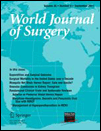The Effects of Morphine–Neostigmine and Secretin Provocation on Pancreaticobiliary Morphology in Healthy Subjects: A Randomized, Double-blind Crossover Study Using Serial MRCP
The study was presented to the International Congress of the Association of Surgeons of Great Britain and Ireland, Liverpool, England, May 2010 and has been published in abstract form [Br J Surg 2010 97(S2):33].
Abstract
Background
Secretin-stimulated magnetic resonance cholangiopancreatography (MRCP) is used for the diagnosis of sphincter of Oddi dysfunction (SOD), but it does not correlate well with sphincter of Oddi manometry. Serial MRCP following morphine–neostigmine provocation may be of value in the assessment of SOD, but the effects of these pharmacological agents on pancreaticobiliary morphology in healthy subjects have not been studied. The aim of the present study was to use serial MRCP to charactertize the effects of morphine–neostigmine and secretin provocation on serum pancreatic enzyme responses and pancreaticobiliary ductal morphology in healthy subjects.
Methods
Following a baseline scan and serum lipase and amylase assays, 10 healthy subjects were randomized in a double-blind manner to receive morphine (10 mg intramuscularly [IM]), neostigmine (1 mg IM) and saline (intravenously [IV]); OR saline (IM), saline (IM) and secretin (1 U/kg IV). A MRCP study was performed at 5, 30, 60, 90, 120, 150, and 180 min thereafter, with blood samples taken every 60 min for 4 h. Pancreatic duct (PD) diameter, visible PD length, common bile duct (CBD) diameter, and gallbladder volume were recorded. Crossover studies were performed 10 days later.
Results
Serum pancreatic enzyme concentrations were significantly greater (amylase, P = 0.003; lipase, P = 0.04) after morphine–neostigmine than after secretin. Following morphine–neostigmine and secretin provocation, the mean (SEM) percentage increase in PD diameter was 28.7 (7.2) versus 12.9 (3.3); P < 0.0001, and visible PD length was 49.4 (11.5) versus 28.1 (8.2); P < 0.0001, respectively.
Conclusions
The effects of morphine–neostigmine were more pronounced than those of secretin in healthy subjects. The diagnostic utility of morphine–neostigmine stimulated serial MRCP for SOD merits further evaluation.




